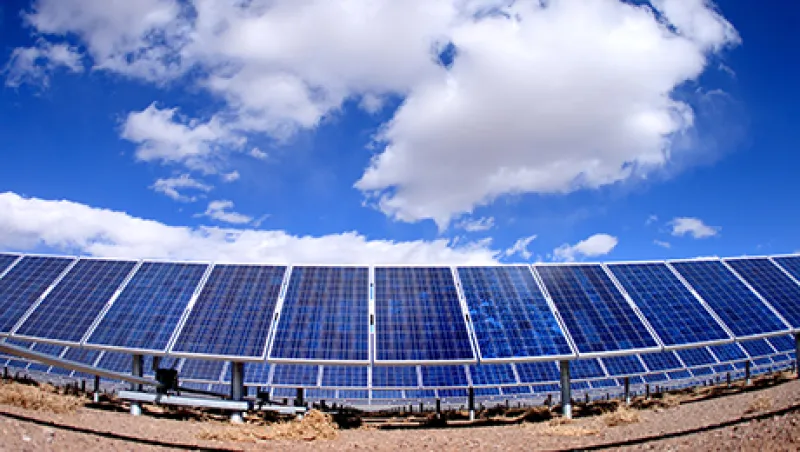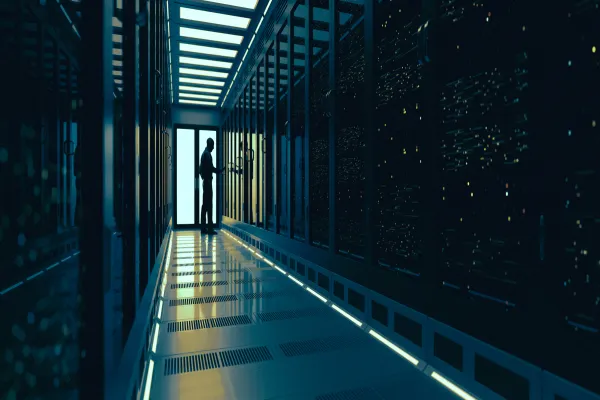New England isn’t exactly synonymous with plentiful sunshine, but real estate developer Cummings Properties harvests solar energy worth $500,000 a year from the Massachusetts skies.
The Woburn, Massachusetts–based commercial real estate firm has invested some $7 million to install small solar plants at its Boston area properties. At the landlord’s 2 million-square-foot Cummings Center in the city of Beverly, several solar arrays atop parking garages generate electricity for lights, elevators and air conditioning. “We get a surprising amount of usable sun hours,” energy manager Lucas Toffoli says of the complex, which is home to more than 500 businesses. “It’s certainly enough to make sense.”
For years, rooftop solar panels have loomed as the next big thing in commercial real estate. But turning the top of a warehouse or a shopping center into a green energy producer is more difficult than one might think.
So far, homeowners and utility companies, not commercial property users, are driving the growth of solar. This year the U.S. will add 16 gigawatts of solar power, according to the 2015 annual industry study published by Washington-based Solar Energy Industries Association and market analysis and advisory firm GTM Research. That’s an increase of almost 120 percent over 2015, with utilities expected to account for 74 percent of the total.
Still, some property investors report good results from their forays into solar power. Prologis, a San Francisco–based real estate investment trust that owns 667 million square feet of logistics and distribution facilities in 20 countries, has rooftop solar plants on 100 properties. Over the past five years, Prologis has tripled the solar output from its roofs, says Matt Singleton, the firm’s vice president of global energy and development.
Prologis leases most of its installations to third-party operators that sell the electricity to local utilities. The REIT doesn’t disclose how much it earns from such arrangements, but Singleton calls the projects modestly profitable.
He acknowledges that solar power has become somewhat less attractive as electricity costs have fallen in recent years. “Initially, solar had a lot of appeal and intrigue,” Singleton says. “But there’s just a lot of things that need to line up.”
One limitation: The panels make best sense on a new roof. What’s more, they must be built in a market where the local utility buys power, or on a building where the tenant has a significant need for electricity. Because many warehouses lack air conditioning, they tend not to be power hogs.
Another obstacle: Building a solar plant is time-consuming. After finishing an installation, Singleton says he invariably thinks, “That was pretty cool, but it was a lot of work.”
Still, proponents say rooftop solar is poised to take off. Among the retailers installing panels atop their structures are Wal-Mart Stores of Bentonville, Arkansas, and Macy’s, which has dual headquarters in Cincinnati and New York. “The commercial-industrial space is the next great frontier,” says Kyle Goehring, national alternative energy services manager at Jones Lang LaSalle, a Chicago-based real estate firm.
If it’s a frontier, it stands to reason that some of the pioneers will face challenges. More than a decade ago, Atlanta-based United Parcel Service built a solar plant on the roof of its distribution center in Palm Springs, California. The installation worked as hoped, but it proved too costly, says William Moir, director of facilities procurement at UPS. “We left it alone for a while because it was expensive,” Moir recalls. “But prices have come down.”
With costs having fallen in the past few years, UPS added solar panels to three of its distribution centers in New Jersey. Moir says he’s pleased with the performance of those plants, but he adds that the company isn’t scrambling to install more solar projects, a standoffish approach shared by other property owners with expansive roofs. “Why isn’t it everywhere? There’s a lot of factors,” Moir says.
Aside from the cost of the panels themselves, roofs often need reinforcement to support the weight and wind loads of solar equipment. There’s also the matter of consistency: Solar panels generate power only when the sun shines. What’s more, the cost of electricity can vary widely from one state to the next, complicating the cost-benefit calculus of investing in solar.
Green energy experts say it’s unclear how solar installations might affect properties’ resale values. Revenue from a power agreement can boost a building’s net operating income and therefore make it slightly more valuable, Prologis’s Singleton notes.
Everyone agrees that price of solar panels is plummeting. Just five years ago, a 50-kilowatt installation cost $260,000. Now that number is less than $100,000, says Goehring of Jones Lang LaSalle: “The economics are increasingly favorable.”
What’s more, electricity and energy prices no longer move in lockstep, so the decline in the cost of natural gas and oil hasn’t led directly to lower utility bills.
Solar panels require a significant up-front cost, but they can keep generating electricity for decades. Many companies calculate a break-even point by determining how long it will take for the output from their roofs to cover the costs of the solar panels.
At Cummings Properties, the break-even point has ranged from as little as three years to as many as eight, Toffoli says. For him, the ever-changing patchwork of government incentives for companies that install solar is another pitfall when it comes to wider adoption. “There’s unpredictability with the state and federal programs,” Toffoli says. “The thing business wants most is predictability.”






